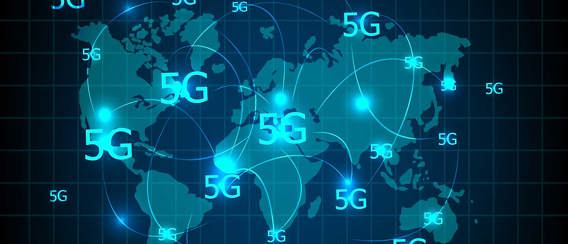Preparing the transport network for 5G: the future is fiber
Previously published on Light Reading
Having attended the Mobile World Congress and OFC conferences this year, I've seen a consistent theme emerge: Now is the time to prepare transport networks for the coming of 5G. The current industry consensus is for deployment of 5G services to commence broadly in 2020. But preparing for 5G is a tricky proposition, given that 5G New Radio is still in the early stages of standardization.
With 5G radio standardization in flux, can network operators do anything right now to lay the groundwork for 5G transport? The good news is that -- at the physical layer, at least -- the road to 5G is clear: The network will be fiber-based, and the network architecture will be centralized RAN (C-RAN).
C-RAN was introduced at 4G (with commercial deployments ramping now), and adds a new transport network segment for mobile networks: fronthaul. With C-RAN, the radio unit remains at the cell tower, but BBUs are moved away from the cell tower and into central offices, where they have easy communication with each other and with other CO-housed elements. The distance between cell towers and BBUs can be up to 20 km using the standard CPRI protocol.
Two significant points to make on C-RAN:
- C-RAN is the transport network architecture required for 5G as virtualization of the BBUs (Cloud RAN) will be a key component for making 5G possible. To scale and deliver the promises of virtualization, the C-RAN architecture needs to be implemented today.
- Fronthaul networks will be predominantly fiber-based due to the combination of capacity and distance requirements. (Microwave may be used in niche cases, but only when fiber is not an option.)
Testing requirements at the physical layer are also straightforward, with the focus on the fiber characterization tests that are critical for any fiber-optic network. That said, there are some differences to understand in preparing for 5G data rates and architectures.
Attenuation
Attenuation is the power reduction of an optical signal as it propagates in a fiber. Common causes of attenuation include dirty or damaged connectors, tight fiber bends, faulty fiber splices and the fiber itself as transmission distance increases. Compared to a distributed RAN, C-RAN introduces two important factors that could increase loss: 1) greater fiber-optic transmission distances, as physical separation between remote head ends and BBUs increases from tens of meters in distributed RAN to 10 km to 20 km; and 2) a greater number of connectors along the transmission route.
An optical time domain reflectometer (OTDR) is the right testing tool for precise attenuation measurements, and should be conducted on any new C-RAN fiber installation. If the OTDR spots connectors with unusually high losses, an inspection probe is useful to decide whether the fiber end face should be cleaned.
Chromatic & Polarization Mode Dispersion
Dispersion is the broadening of an optical pulse and can lead to increased bit error rate in optical transmission. The two most relevant forms today are chromatic dispersion (CD) and polarization mode dispersion (PMD). CD is caused by different wavelengths (colors) in a pulse of light traveling at different speeds. PMD is caused by differences in propagation velocities for different polarization states.
At sub-10G rates, CD and PMD tolerances are very high, but at 10G and above, dispersion becomes an issue. This is an important consideration as mobile backhaul networks move to 10 Gbit/s data rates (and ultimately higher). Distance is also a contributing factor. Test and measurement supplier EXFO recommends dispersion testing for any spans longer than 15 km to 20 km, with this testing being done prior to commissioning to avoid CD/PMD-related failures down the road.
The migration to coherent 100G transmission in long-haul networks and, more recently, in metro networks mitigated a lot of the issues around dispersion impairments due to the power of digital signal processing. But coherent detection also comes with some limitations that were not present in 10G direct detect systems, such as sensitivity to fast changes in state of polarization (SOP) and PMD. Since SOP and PMD can vary in a matter of microseconds, coherent receivers must compensate for PMD and SOP in real time, which sometimes cannot be achieved if they change too fast, leading to loss of signal.
The best way to prevent SOP and PMD compensation failures in coherent receivers is to avoid using fibers with high PMD, because fast changes in SOP and PMD occur more often in high-PMD fibers.
In summary, operators planning for a 5G future can take steps right now at the physical layer by extending fiber out to their cell sites in anticipation of centralized RAN architectures that will be required for any of the protocol scenarios being hammered out at the higher layers. From a physical layer testing perspective, the approach is straightforward with an emphasis on fiber characterization.
Above the physical layer, the situation is a bit more complex for 5G fronthaul and backhaul planning. We will discuss fronthaul/backhaul transport for 5G in a separate blog.




